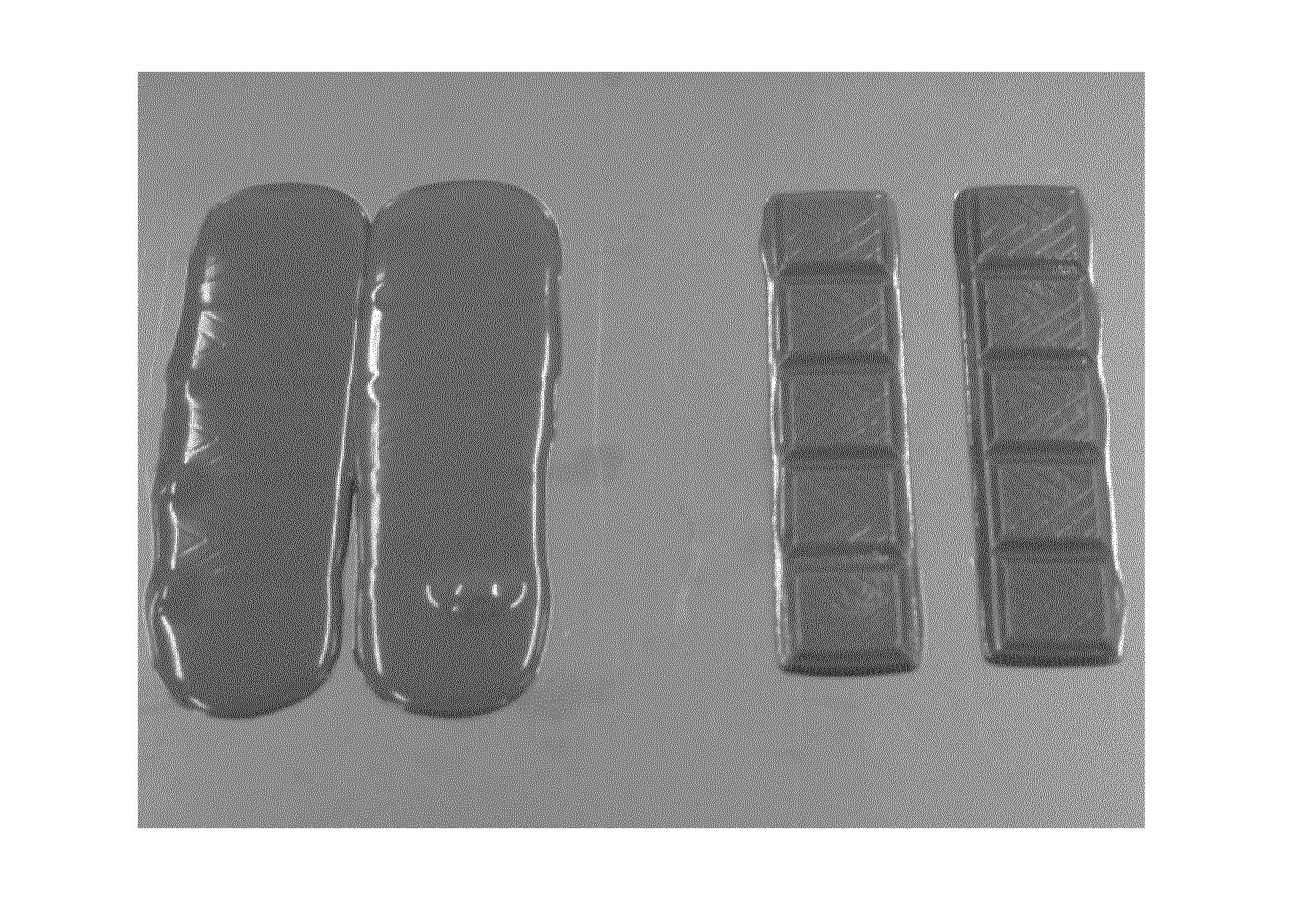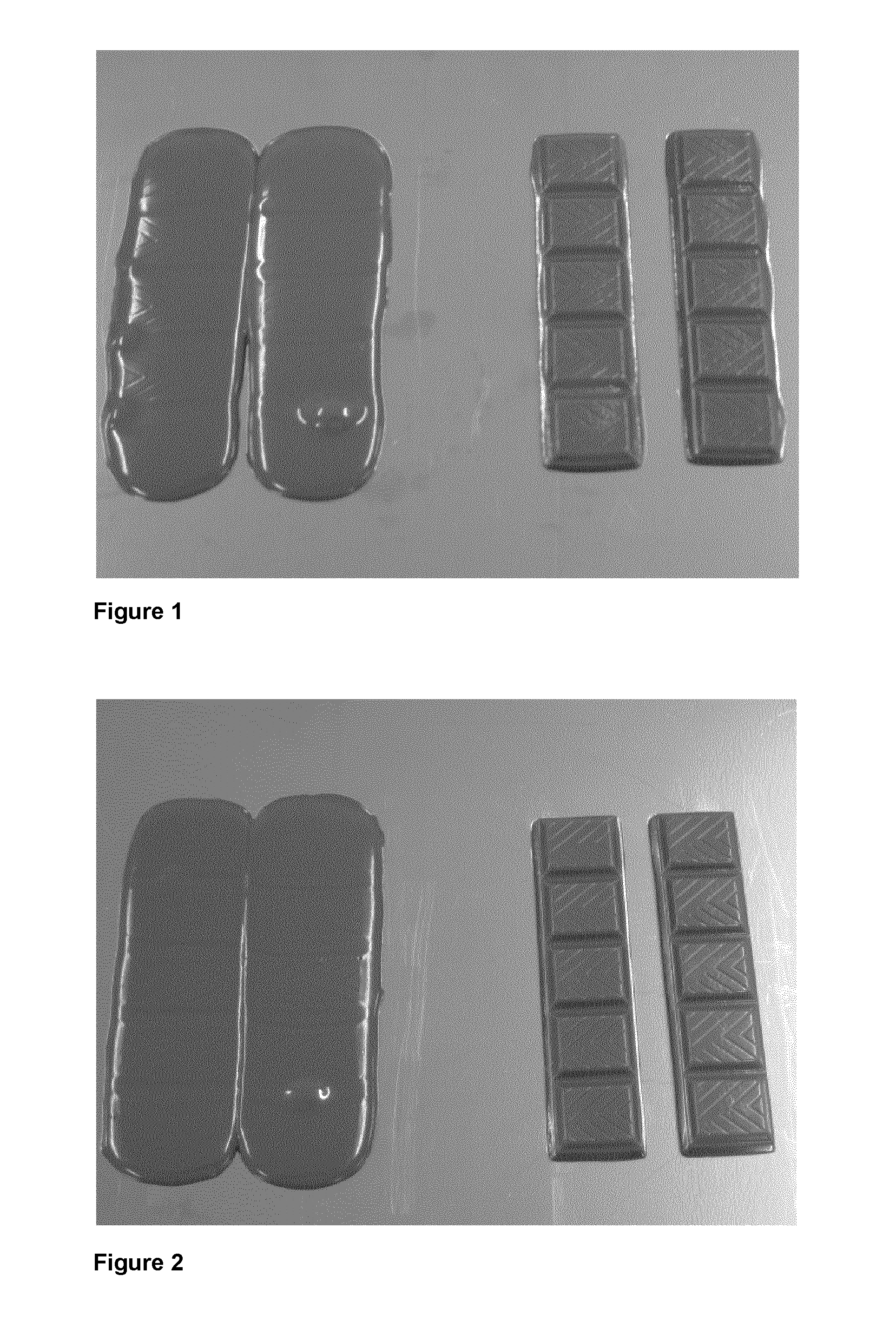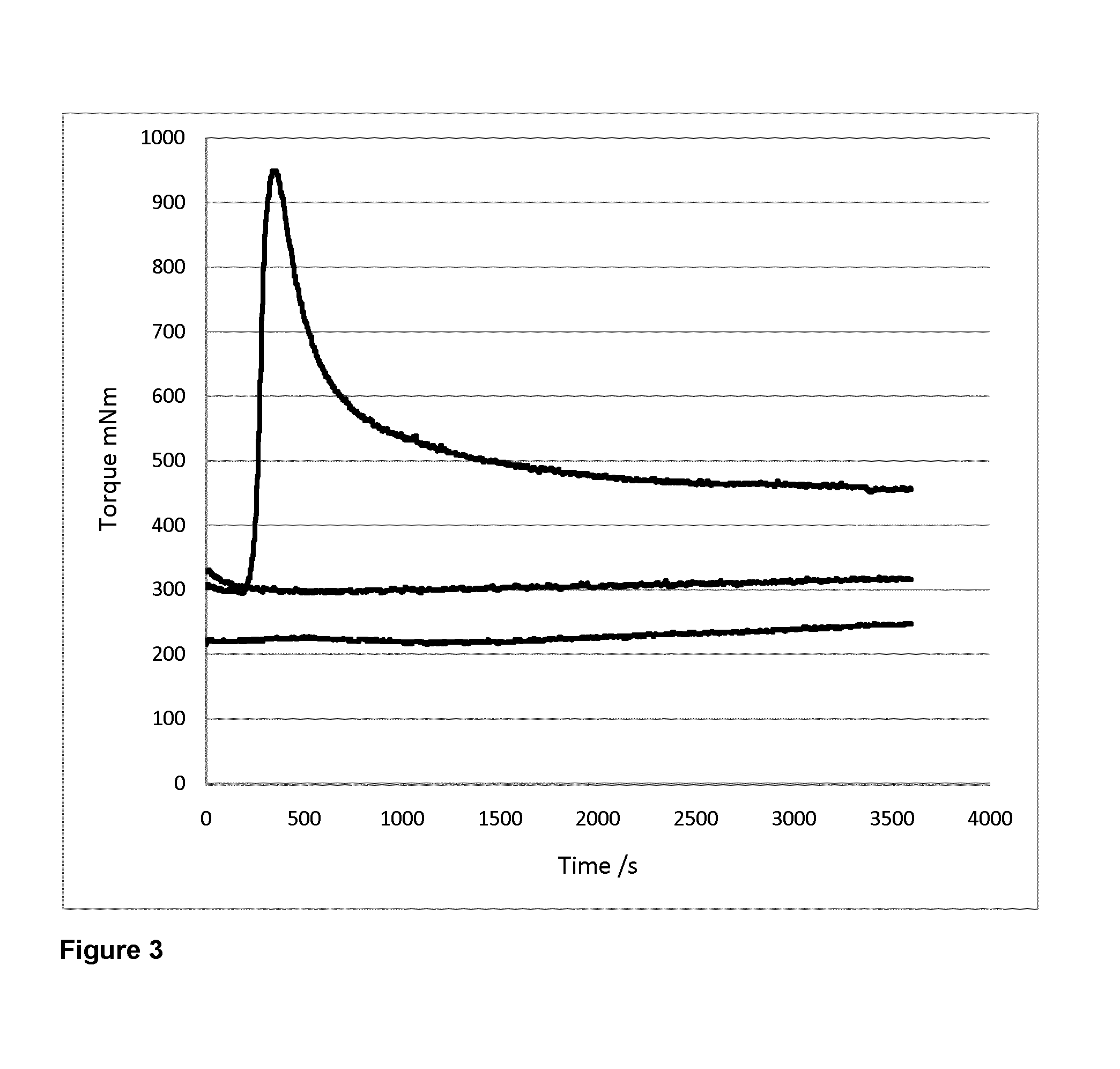Tropicalizing agent
a technology of tropicalizing agent and granule, which is applied in the field of tropicalizing agent, can solve the problems of loss of mechanical strength of chocolate, chocolate becomes sticky or even runny, and semi-liquid mass that can often only be eaten, and achieves the effects of preserving the organoleptic properties of regular chocolate, minimizing or avoiding gritty textural quality, and simple and cost-effective processes
- Summary
- Abstract
- Description
- Claims
- Application Information
AI Technical Summary
Benefits of technology
Problems solved by technology
Method used
Image
Examples
example 1
Preparation of a Tropicalizing Agent According to One Embodiment of the Invention, Comprising Glycerol
[0086]Tropicalizing agent was prepared with a composition as follows:
Cocoa Butter3 parts50%Herbacel AQPlus Citrus Fibre1 part17%Glycerol2 parts33%
[0087]100 g of dry citrus fibre powder was dispersed in 300 g of molten cocoa butter at a temperature of 55° C. using a high shear stator-rotor benchtop mixer (Silverson Machines Ltd, Chesham, Bucks, U.K. Model: L2R) operating at medium speed setting for a duration of 2 minutes.
[0088]200 g of glycerol was warmed to 55° C. and added slowly and incrementally to the dispersion of fibre with continuous high speed mixing. A homogeneous mix of all three components was made, the glycerol being evenly distributed amongst the dispersion of fibre particles. The total period of mixing during the addition of glycerol was 15 minutes.
[0089]The mixture was allowed to cool and solidify at ambient temperature. Alternatively the mixture can be stored warm (...
example 2
Preparation of a Tropicalizing Agent According to One Embodiment of the Invention, Comprising Water
[0090]Tropicalizing agent was prepared with a composition as follows:
Cocoa Butter3 parts50%Herbacel AQPlus Citrus Fibre1 part17%Water2 parts33%
[0091]100 g of dry citrus fibre powder was dispersed in 300 g of molten cocoa butter at a temperature of 55° C. in the liquidizer jug attachment of a Kenwood Multi-Pro food processor operating at maximum speed. 200 g of potable water was warmed to 55° C. and added slowly and incrementally to the dispersion of fibre whilst the high speed mixing was maintained. A homogeneous mix of all three components resulted, the water being evenly distributed amongst the dispersion of fibre particles. The total period of mixing during the addition of water was 15 minutes. The mixture was stored warm (50° C.) ready for later use.
[0092]Alternatively the mixture can be allowed to cool and solidify, e.g. at ambient temperature.
example 3
Preparation of a Tropicalizing Agent According to One Embodiment of the Invention, Comprising Water and Glycerol
[0093]Tropicalizing agent was prepared with a composition as follows:
Cocoa Butter3 parts 50%Herbacel AQPlus Citrus Fibre1 part16.7%Water1 part16.7%Glycerol1 part16.7%
[0094]100 g of dry citrus fibre powder was dispersed in 300 g of molten cocoa butter at a temperature of 55° C. in the liquidizer jug attachment of a Kenwood Multi-Pro food processor operating at maximum speed.
[0095]100 g of potable water and 100 g of glycerol were mixed by manual stirring in bowl and warmed to 55° C.
[0096]The water / glycerol mix was added slowly and incrementally to the dispersion of fibre whilst the high speed mixing was maintained. A homogeneous mix of all three components was made, the water and glycerol being evenly distributed amongst the dispersion of fibre particles. The total period of mixing during the addition of water and glycerol was 15 minutes.
[0097]The mixture was stored warm (5...
PUM
 Login to View More
Login to View More Abstract
Description
Claims
Application Information
 Login to View More
Login to View More - R&D
- Intellectual Property
- Life Sciences
- Materials
- Tech Scout
- Unparalleled Data Quality
- Higher Quality Content
- 60% Fewer Hallucinations
Browse by: Latest US Patents, China's latest patents, Technical Efficacy Thesaurus, Application Domain, Technology Topic, Popular Technical Reports.
© 2025 PatSnap. All rights reserved.Legal|Privacy policy|Modern Slavery Act Transparency Statement|Sitemap|About US| Contact US: help@patsnap.com



